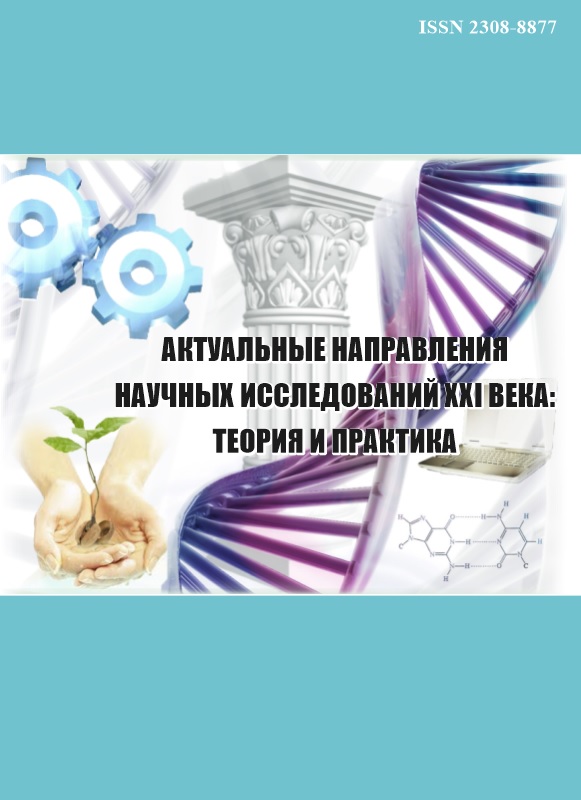Voronezh, Voronezh, Russian Federation
Russian Federation
Voronezh, Voronezh, Russian Federation
The paper provides an overview of the research of the working processes of the screw working bodies of technological machines. It is shown that at present such an issue in the theory of auger working bodies as the number of auger turns is necessary, what position of the auger spiral should be in relation to the center, etc. is not completely solved, the solution of these issues can provide increased productivity. In modern conditions, caused by global climatic changes in the world, the requirements for the conditions for the protection of forest zones have increased, which makes it necessary to increase funds for fighting fire in forests and increase the raw material and financial base of specialized forest protection services, which is due to the constant search for new and improvement of old methods of forest fire elimination. Special ground-throwing machines have the greatest efficiency, but they do not have working equipment for pushing combustible materials in the form of a ground cover, dead wood, and felling residues. For these purposes, in our opinion, the most suitable auger working bodies installed in front of the rotor-throwers. Modeling of the working process of screw working bodies is based on the particle dynamics method. In the process of modeling, the forest litter is made in the form of a set (about 5000) spherical elements in diameter, which interact with each other and with the working surfaces of the auger working bodies. The working surfaces of the screw drum are represented from the lateral surface of the cylinder, modeled as a separate geometric figure, and 200 triangles forming a helical surface. It was found that the optimal cutting depth is 8-10 cm, at which the auger almost completely cleans the working strip from the soil layer, but at the same time is not too deeply buried to cause large power losses. The identified main parameters of the auger working bodies will be used to create an effective forest fire ground-throwing machine.
ground cover, augers, forest fire, ground-throwing machine, working process
ВВЕДЕНИЕ
Одна из наиболее актуальных проблем лесного хозяйства - проблема борьбы с лесными пожарами, которая в настоящее время вышла за рамки лесной отрасли и стала важной частью охраны природы и окружающей среды, социально-государственной задачей в обеспечении безопасности населенных пунктов и жизни человека. Самыми эффективными для профилактики и ликвидации низовых лесных пожаров являются грунтометательные машины, но у них отсутствует оборудование для удаления напочвенного покрова и горючих материалов из потока грунта, подаваемого роторами-метателями в зону огня. На наш взгляд, для этих целей подходят шнековые рабочие органы, которые широко применяются на различных технологических машинах для перемещения пластичных, сыпучих и пылевидных материалов. Однако они имеют серьезные недостатки - низкая производительность и высокая энергоемкость, вследствие чего, почвогрунт прилипает на шнек и не имеет осевого перемещения, кроме этого, замечен повышенный износ винта, также возросли потери на перегрузки. Все это объясняется тем, что уровень теории по шнековым рабочим органам отстает от практических испытаний. Поэтому работа направлена на повышение эффективности применения шнековых рабочих органов на лесопожарных грунтометательных машинах и является актуальной.
Цель исследования. Выявление основных параметров шнековых рабочих органов лесопожарных грунтометательных машин за счет анализа исследований рабочих процессов шнековых рабочих органов технологических машин в смежных областях науки.
МАТЕРИАЛЫ И МЕТОДЫ ИССЛЕДОВАНИЯ
Теоретическим и экспериментальным исследованиям шнековых рабочих органов технологических машин посвящены работы ряда отечественных и зарубежных ученых.
В работе Погорова Т.А. [1] рассмотрен рабочий процесс шнекового режущего аппарата мелиоративной косилки с горизонтальной осью вращения для осуществления бесподпорного среза и измельчения стеблей растений. При анализе технологического процесса работы шнекового аппарата определена закономерность изменения рабочей высоты ножа при обращении шнека (рис. 1).
1. Pogorov, T.A. Optimizaciya vysoty nozhey shnekovogo rezhuschego apparata meliorativnoy kosilki / T.A. Pogorov // Nauchnyy zhurnal Rossiyskogo NII problem melioracii. - 2012. - № 4(08). - S. 161-171. - Rezhim dostupa: http:rosniipm-sm.ru/archive?n=131&id=145.
2. Zakirov, M.F. Issledovanie vliyaniya shaga shneka na moschnost' privoda pitatelya malogabaritnogo shnekorotornogo snegoochistitelya / M.F. Zakirov // Intellektual'nye sistemy v proizvodstve. - 2015. - № 2 (26). - S. 56-57.
3. Lipin, A.A. Statisticheskiy prochnostnoy raschet sistemy «shnek - grunt» / A.A. Lipin, A.D. Strizhak // Nauka segodnya: global'nye vyzovy i mehanizmy razvitiya: materialy Mezhdunar. nauch.-prakt. konf. V 2 ch. - Vologda, 2017. - Ch. 1. - S. 17-19.
4. Kitov, A.G. Matematicheskaya model' shnekovogo ryhlitelya dlya razrabotki donnyh otlozheniy / A.G. Kitov, I.A. Cogin, V.A. Shapkin // Vestnik Mininskogo universiteta. - 2013. - № 1 (1). - S. 20.
5. Bartenev, I.M. Research and development of the method of soil formation and delivery in the form of a concentrated flow to the edge of moving ground forest fire / I.M. Bartenev, P.I. Popikov, S.V. Malyukov // IOP Conference Series: Earth and Environmental. - 2019. - no. 226 (1). - 012052. - DOI:https://doi.org/10.1088/1755-1315/226/1/012052
6. Popikov, P. I. Vliyanie rezhimov raboty lesopozharnoy gruntometatel'noy mashiny s gidroprivodom na pokazateli effektivnosti / P. I. Popikov, V. P. Popikov, A. V. Sharov, A. F. Petkov, A. K. Pozdnyakov // Lesotehnicheskiy zhurnal. - Voronezh, 2020. - № 1 (37). - S. 209-217.










